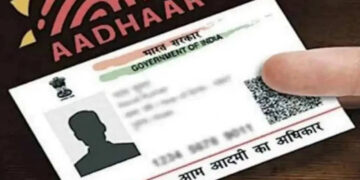CPIM leader Sitaram Yechury died on Thursday at the age of 72 in AIIMS Delhi. After which, as per his wish, the family donated his dead body to AIIMS. After the last rites, Yechury’s body will be handed over to the Anatomy Department of AIIMS. However, it is interesting to know what happens to the dead body donated to the hospital? For how many days does this body remain in the hospital? Can any relative ask for it back? Do the hospital also cremate that body? Let us know the answers to all these questions in points from Dr. MC Mishra, former director of All India Institute of Medical Sciences, New Delhi…
What is the use of dead body?
Dr Mishra says that whenever a donated body comes to the hospital, it often goes to the anatomy department because every MBBS student studies this subject and learns the basic anatomy and surgical procedures of various organs through dissection of the body.
Read this also
Why do we remember only tea and pakoras during rainy season and not anything else? It is not just the taste, this is the scientific reason
First of all, protect the body
The body starts rotting within a day or two of death, bacteria start growing in it, so it is most important that the donated body is preserved. Several techniques are adopted for this. One of them is the Thiel technique. In this, a coating is applied on the body. By doing this, the body remains soft and bacteria also do not grow in it. There is also less smell in this technique, so students do not have difficulty in touching, cutting or holding it. Apart from this, formalin can also be applied on this body, it also keeps the body soft and in natural form.
Also, a solution is injected into the dead body. By doing this, the body can be kept as long as you want. It does not spoil.
Then they dissect the dead body
When the body is secured, it is taken to the students studying medicine. Here, the students are divided into different groups and given the task of dissecting different body parts. In anatomy, the neck, stomach, hands, legs are dissected separately to understand the details inside the organs. This is done until the body is completely used. By doing this, the students do research work along with their studies.
takes out the bones
After this, when the body is mutilated, the bones are taken out from it. Students also study further using these bones. While the rest of the body is disposed off.
Is the body returned to the family?
After body donation, the body is not returned to the family. Nor do the family members apply to the hospital to ask for the body. Even if someone asks for the ashes, the hospital may agree to it and may also give it. Usually this does not happen.
Do you perform the last rites of the dead body?
Dr. Mishra says that after dissection and removal of bones, there is nothing left in the body that can be cremated or buried. As per the rules of the hospital, it is disposed off.
For how many years is the dead body used?
Dr. Mishra says that in England the maximum period for keeping a dead body is 7 years, but there is no such rule in India. When 50-100 students together dissect the entire body, then only one session can be conducted on the dead body.
What is the benefit of body donation?
Dr. Mishra says that body donation is very useful for students studying MBBS. Every MBBS student has to do dissection in the beginning while studying anatomy, so dead bodies are required. If someone donates willingly, it is even better.
Read this also
Can height increase even after 18 years? Expert told these 3 things, your dream of height will be fulfilled
Tags: aiims delhi, aims doctor, dead body, Sitaram Yechury
FIRST PUBLISHED : September 13, 2024, 18:39 IST






